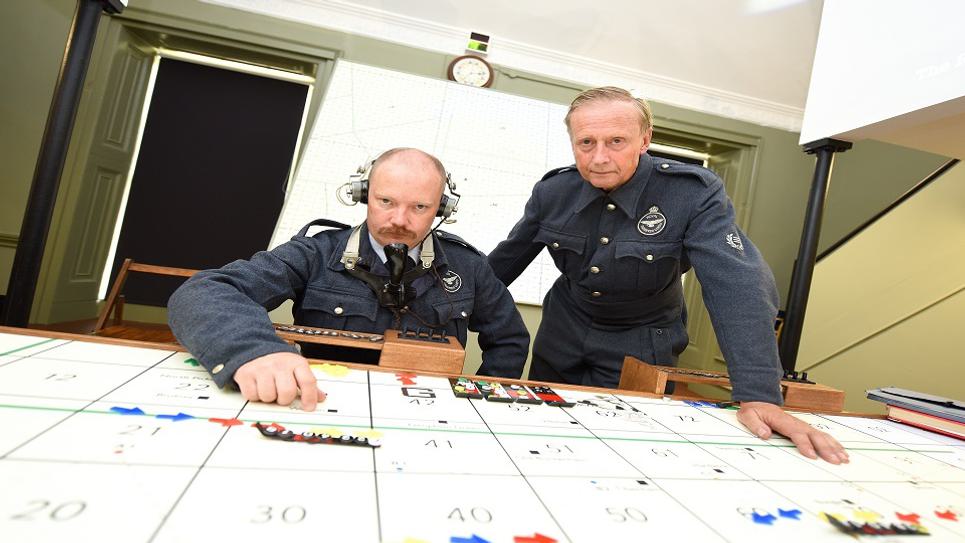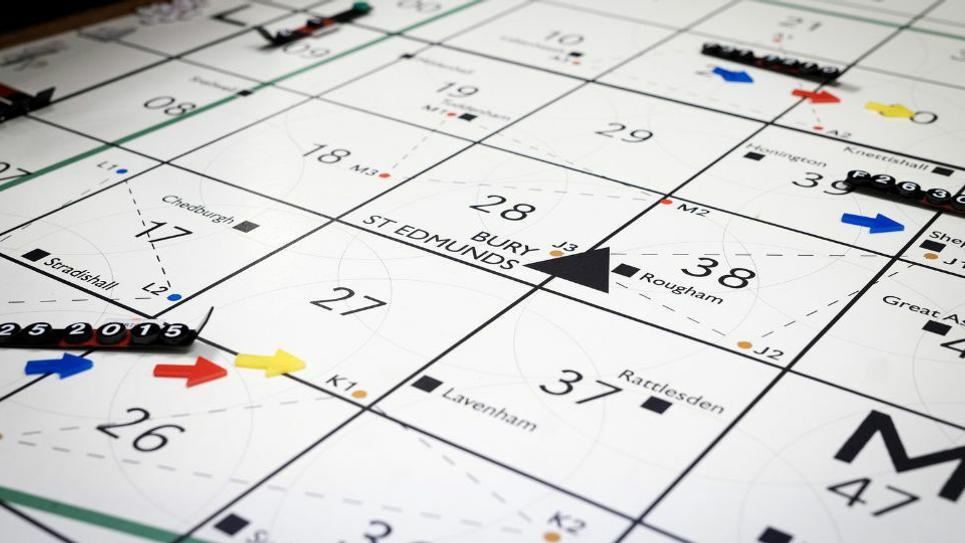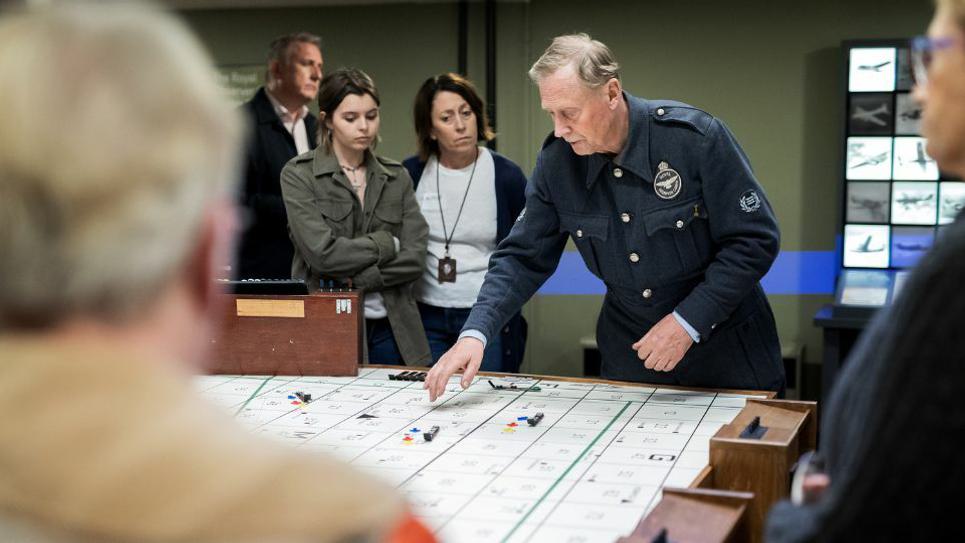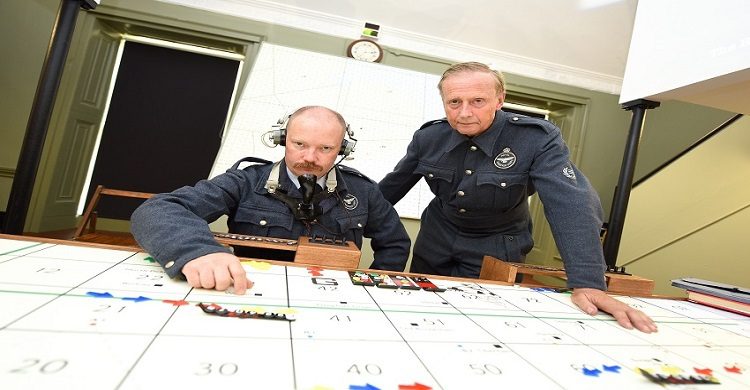
Back to Blogs
Discover
Visit the Only Surviving WWII Royal Observer Corps Operations Room in the UK
Bury St Edmunds Guildhall contains the only surviving WWII Operations Room of the Royal Observer Corps (ROC) – an unsung group of local heroes who were the ‘eyes and ears of the RAF’ during the Battle of Britain.
Bury St Edmunds Guildhall WWII Ops Room is estimated to have saved 5,000 allied airmen’s lives throughout the War.

Through its 1,000 year history Bury St Edmunds Guildhall has had many different roles, but none so vital as the part it played in World War II.
Bury St Edmunds Guildhall contains the only surviving WWII Operations Room of the Royal Observer Corps (ROC) – an unsung group of local heroes who were the ‘eyes and ears of the RAF’ during the Battle of Britain.
It was in this room at The Guildhall that the ROC remained on duty, day and night, tracking incoming enemy air raids and friendly aircraft alike. The atmosphere crackled with the tension, concentration and teamwork of this most dedicated group of men and women.
Twelve months after it opened in 1939, the Guildhall’s Ops Room was ranked as one of the best in the country. It is estimated to have saved 5,000 allied airmen’s lives throughout the War.
Their story has been hidden behind a veil of secrecy for over 80 years, but now it’s all been declassified for you to explore.
See Where They Plotted Incoming Enemy Aircraft

The Plotting Table
By 1939, new Radar technology could detect enemy aircraft approaching Britain’s coastline. However, aircraft flying inland could only be tracked by the eyes and ears of volunteer observers posted across the country.
For the first few months of the war, there was little activity. But the Observer Corps was preparing, honing their aircraft recognition skills and communication channels.
In the summer of 1940, the German airforce launched a huge wave of attacks. The national network of Observer Posts and Ops Rooms tracked thousands of aircraft, giving the RAF the vital information they needed to intercept enemy planes and rescue allied ones.
The Royal Observer Corps (ROC) Operations Room in Bury St Edmunds was organised by Captain D. C. Bright – former mayor of the town, and member of the Council. In 1938, Captain Bright suggested the unused former Council Chamber was ideal for the Ops Room, being close to the telephone exchange, and recruited over 150 staff organised into three shifts, although it was pared down to 100 people later on.
Working in three shifts, around the clock, seven days a week, No14 Group headquarters in The Guildhall covered most of Suffolk and part of Norfolk as far as the coast. Volunteers who manned the Guildhall ops room came from a wide variety of backgrounds. The register of more than 70 from 1939 includes a watchmaker, rent collectors, clerks, shop workers and a journalist.
Spotters in observation posts scattered across the region, reported every plane they saw (or heard) to the plotters around the Ops Room plotting table.
Plotters received information from 3 or 4 observation posts and used triangulation to work out exactly where an aircraft was. They placed coded markers on the plotting table to indicate the type, number, height, speed and direction of each sighting.
Tellers stationed on a mezzanine level in the Ops Room, watched the plotters work. They chose the moment to call the RAF or emergency services.
In use, the room was always blacked out and lighting was carefully regulated to maximise visibility on the central plotting table.
Discover How Observers Helped Save Lives and How They Trained

The centre was connected directly with around 40 Observer posts placed six to ten miles apart across the region to the coast.
Observers were encouraged and expected to learn to identify a wide range of aircraft types. They were tested frequently and had to be able to identify friendly and enemy aircraft. You can see these wartime aircraft recognition cards on display at The Guildhall.
Incoming bombers would often use the sugar beet factory in Bury St Edmunds as a marker, bearing North for the Midlands, Leeds or Liverpool or heading South, aiming at airfields around London.
You can also see the binoculars used by Observer Thomas Coleman at local ROC post J3, just off the Westley Road in Bury St Edmunds.
As the war progressed, Observers became more skilled at identifying aircraft by just sound.
Every time a post saw or heard anything they reported it to the ROC Operations Room and kept a record of it in the Post log.
You can have a listen to just some of the range of aircraft types that the Observers could identify by sound alone, including a B17 Flying Fortress which were flown from Rougham, at one of The Guildhall’s interactive exhibits – The Eyes and Ears of the RAF.
You can also see an original teleprinter. During the war the teleprinter would have clattered away bringing and sending important messages via the telephone cable.
Find Out About The Clock That Saved Britain

Pinpoint precision in timing was essential for information conveyed to RAF Fighter Command to be effective. Accuracy in timing sightings meant pilots could be in the right place at the right time to engage in combat.
Across the nation, timings were synchronised by electrically driven, highly accurate clocks controlled directly from the local telephone exchange.
To clarify the timing of each plot on the table, the face of the clock was divided into coloured sections of 5 minutes, red, yellow, and blue in turn.
By 1943, new aircraft could fly faster than ever before. To keep up with them on the plotting table, the coloured sections on the special clock faces now represented 2 ½ minutes, instead of 5.
What Happened When the War Ended
Within a few days of the end of hostilities on 12 May 1945, most of No14 Group Royal Observer Corps (ROC) were stood down. They celebrated with a dinner at Palmers Restaurant in the town. But this was not the end for the ROC. The Cold War was beginning. Many of the local airfields became bases for jet powered nuclear bombers or missiles. The ROC was reformed and continued to train at The Guildhall. The ROC was formerly stood down in 1991.
Winston Churchill said of the Royal Observer Corps: “They were our instrument of war – the like of which has never been seen before”.
Free monthly open days to see the WWII ROC Operations Room take place throughout the year when reenactors bring the room to life in costume. You can also get married in the WWII Ops Room - is a truly unique setting for a wedding.
Events at Bury St Edmunds Guildhall WWII Ops Room
Related Blogs

News
Bury Tour Guides to launch…
Bury St Edmunds Tour Guides to Introduce new tours in…

News
Town’s Museum Forms New…
Moyse’s Hall Museum will be forging links with a…

News
St Edmundsbury Cathedral…
St Edmundsbury Cathedral in Bury St Edmunds is…

News
Bury St Edmunds & Beyond…
Step inside many of Bury St Edmunds historic buildings…

News
Bury's Best Pubs with a Past
some notable, historic and somewhat quirky pubs and…
Latest news

News
Enjoy a Festive Afternoon Tea in 2025
Celebrate the Christmas season with a festive afternoon tea in Bury St Edmunds & Beyond...

News
Festive Winter Walks
Get outside and enjoy the fresh crisp winter air with one of these walks in Bury St Edmunds and Beyond!

News
Bury Tour Guides to launch new tours next year after successful 2025
Bury St Edmunds Tour Guides to Introduce new tours in 2026 and continue the successful Food and Drink Tours!

News
New in Bury St Edmunds For 2026
A sneak peak into new attractions visitors can enjoy in Bury St Edmunds in 2026.

News
Baby It's Cold Outside... Things To Do When the Weather Turns Frosty
Just because the temperature’s dropped doesn’t mean the fun has to! If you’re visiting town during the chillier months, there’s still plenty to see, do, and experience.

News
Places to sit by a roaring fire in Bury St Edmunds & Beyond
Warm up by a roaring fire this winter in Bury St Edmunds & Beyond...

News
Christmas Park and Walk 2025
Additional parking has been provided by West Suffolk Council in partnership with Greene King this Christmas.

News
Festive Theatre Guide 2025
There’s no better way to summon the magic of the festive season than a trip to the theatre.

News
Festive Markets in Bury St Edmunds
Festive markets are set to bring seasonal cheer to Bury St Edmunds this November and December, offering the perfect chance to pick up all of your Christmas essentials!
